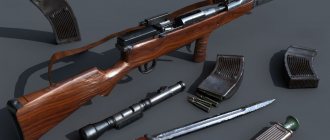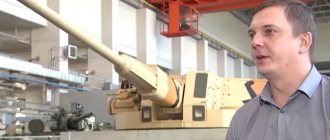Features of choosing slot machines
Today, all types and types of slot machines for playing for money .
Their range is much wider than in real casinos. These are not only classic slots that many beginners and advanced players enjoy, but also various modern games. If we consider all gaming machines in Russia, they are characterized by the features of the game plot, design and sound. They are quite good not only for having fun, but also for winning money. If desired, gamers can use all the slot machines in the world if they visit the appropriate sites. Many people wonder: how to choose slot machines to win money? In this aspect, it is not excitement that will help, but careful observation of the game process on each of the machines. It is noted that if you go to one or another room, you can win more than in others. The same applies to individual games.
Experts advise starting with popular developments that have demonstrated reliability over many years. Each establishment has the opportunity to play for free , i.e. familiarize yourself with the features of a particular version. Quite interesting games in a casino like Vulcan, where you can choose from different types, types and variations. In this aspect, much depends on the individual preferences of each gamer, his experience and gaming qualifications.
When is a manual better than an automatic?
On many premium-segment models, manual transmissions disappeared many years ago, but in the mid-price range and even more so among inexpensive cars, versions with three pedals are still in high demand. Let's figure out what arguments force the buyer to choose “mechanics”?
Subtleties of terminology
First, a few introductory notes on terminology. It is correct, of course, to say not “manual box”, but “manual box” - why? Today, two criteria for grouping gearboxes are widely used. The first is based on the type of torque transformation. According to this principle, passenger car transmissions are divided into mechanical and hydromechanical - based on the presence or absence of a torque converter. The second criterion is the driver’s participation in selecting and changing gears. Based on this feature, transmissions (more precisely, based on the type of gearshift lever) are divided into manual and automatic. If the driver does not select a gear and does not engage it, then we are dealing with an automatic transmission. A car with an automatic transmission always has two pedals - gas and brake.
The reader probably noticed that the same gearbox can be both mechanical, in the form of torque transformation, and “automatic,” in the sense that the driver does not have to pull the lever and squeeze the clutch. But are there any examples of this? As many as you like - any gearbox with two automatic clutches, that is, the Double Clutch Transmission (DCT) type. Or - any transmission based on a variator with clutch packs instead of a torque converter. As a rule, only savvy motorists are aware of these subtleties, but to verify the veracity of our words, there is no need to dive into technical literature - just open any “Vehicle Type Approval” on the Rosstandart website, issued for a car with a DCT type gearbox, for example, on Haval F7. In the line “Transmission” it is indicated “mechanical”, in the line “clutch” - “two multi-plate clutches operating in an oil bath” and below the type of box is: “automatic with manual control”, although usually this third line is not given at all. Actually, all manual gearboxes can also be divided into their own groups, for example, according to the type of kinematic diagram - two- or three-shaft, that is, according to the number of pairs of gears that transform the moment within one stage, but today we will not go into all these details and Let’s assume that “manual” is when the car has three pedals, and “automatic” is when there are two. This is quite enough for the average person.
Three pedals and a stick - an option for those who know how and, of course, like to drive a car, and not just drive it
So, the advantages of a manual transmission:
Savings on purchase
The buyer encounters one of the advantages of a manual transmission already at the car dealership when buying a car. There are cases when an “automatic” is relatively cheap, but this is rather an exception. In our market, there is, perhaps, only one thing - we are talking about a home-grown Tolyatti AMT gearbox, which was converted from a manual one, equipped with control electronics and ZF actuators. Despite the fact that solenoids are imported from Schweinfurt, Germany, the difference in price between the Granta AMT sedan and the manual Granta is only 25,000 rubles. It seems like a little? But a full-fledged, albeit outdated, 4-speed automatic transmission from the Japanese company Jatco, which is supplied from abroad, adds 60,000 rubles to the price of the Grant, or in this case more than ten percent of the price of the “manual” version. In the economy segment, such a premium is quite noticeable. It is not surprising that for every 15 manual Lada Grantas sold, there is only one car with such an automatic transmission.
Automatic transmission on Grants increases the cost of the car too noticeably for buyers
However, the higher the segment we look at, the higher the share of automatic transmissions will be, and this is logical: the less the buyer thinks about the price of the car, the more happily he will spend on comfort, not to mention the fact that today many motorists simply unable to handle the lever and three pedals... You don’t need to go far: among Kia Rio buyers, 78% prefer automatic transmissions, despite the fact that here the two-pedal version costs only 40,000 rubles more, although, unlike Zhiguli cars, we are talking about a 6-speed automatic transmission, and in this case it is already less than five percent of the price of the car, and not in the most expensive version.
Saving on lubrication
Of course, the price benefit is not limited to just the purchase. The manual transmission is filled with oil for its entire service life, and an experienced driver remembers this unit only after driving about 150,000 km, when the clutch needs to be changed. But in any “automatic” - no matter what type, the oil must be changed, even if this is not provided for by the regulations. For what? Let's take for example the Jatco JF016E variator - very popular in Russia, which is installed on several Nissan and Renault models. Recently, it found its place under the hood of the restyled Kaptur paired with the 1.3 Turbo H5H engine. So, unlike the younger CVT model (JF015E), it does not have a planetary gear, which makes it possible to reduce the operating range of the continuously variable transmission, and this means that the oil will become less clogged with friction dust, however, due to the greater load on the set belt, the ATF becomes more contaminated with metal shavings. In general, if you want to drive this CVT and not know any troubles, without stopping yourself when you want to accelerate with the pedal to the floor or force a small puddle in the field, an oil change, and a complete one, is mandatory at 40,000-50,000 km. And even by the standards of a specialized, and not an official, repairman, this will cost 20,000 rubles.
Changing automatic transmission fluid is not a cheap pleasure. However, replacing the machine itself is much more expensive
On complex modern hydromechanical “automatic machines” of a classical design, that is, consisting of a set of planetary gears and a torque converter, you will also have to think about changing the oil; after all, on many transmissions, gear engagement is now carried out by two clutches. Another thing is that on premium brands you don’t need to do this often, for example, on the current generation Range Rover Sport (L494) the first procedure was postponed from 48,000 km to 130,000, but behind the scenes even the official service technician will recommend draining the old ATF at least once every 80,000 km, which with all consumables and associated work costs 60,000 rubles.
It is interesting that some manufacturers that do not provide for oil changes by regulation simply prohibit official dealers from carrying out this procedure if the car is still under warranty, and it is also beneficial for the dealers themselves if the owner waits until the unit is overhauled - this is incomparably more profitable. Let’s not forget that dealers make most of their money not from car sales, but from service. Finally, automatic transmissions more often fail due to natural reasons: the more complex the unit, the higher the likelihood of its failure. Not to mention the fact that there are simply unsuccessful transmissions like the notorious DP0 that was installed on French cars; the defects in their design turned out to be simply designed. Later mechanisms are also not a gift - let’s remember how much Volkswagen owners spent with DSG boxes...
VAG engineers spent so long “working on mistakes” that for many buyers the abbreviation DSG is still a stopping factor when choosing a car
Another point that many people forget: manual transmissions do not require warming up, but all automatic transmissions, regardless of type, do - and the lack of proper warming up also leads to premature breakdowns.
Fuel economy
The main argument “for mechanics” remains fuel consumption, however, we are talking only about urban modes, where the “handle” actually saves 10–20% of gasoline, but on the highway this difference is reduced to almost zero.
Less price drop during operation
A manual transmission also demonstrates its “price” advantage when reselling a car: due to its simplicity and reliability, it has less impact on the residual value, despite the fact that when buying a used car with two pedals, you first need to worry about diagnosing the “automatic” and ask the owner for documents, confirming the oil change, the presence of which, of course, does not guarantee the absence of malfunctions, because “automatic machines are very sensitive to driving style!
Which transmission makes a used car more valuable? With reliable!
Savings on brake pads and discs
If handled correctly, the owner of a manual car changes brake pads at least twice as often. The difference is greater the more often it accelerates and brakes during everyday driving. The fact is that even without taking into account aggressive braking by steps, which not every owner of a “manual” version has, a simple release of the gas while maintaining the selected step already gives a noticeable deceleration. Now let’s remember that every second change of pads is accompanied by a change of brake discs, after which you need to re-set the wheel alignment, and all the “extra” operations greatly increase the cost of operation.
Savings on operating costs
Of course, “mechanics” reduces the operating costs of a car only for a qualified driver, because if you constantly put it in neutral and pull up to a traffic light on the brakes, don’t expect any savings, including on fuel. But if you only engage neutral when stopping, then it’s a different matter.
An inexperienced driver will not get all the advantages of a manual transmission.
Of course, with an active reduction, the synchronizer may fly out, but if this is not a congenital design defect, you most likely will not encounter this. In addition, the automatic transmission will require the driver’s attention. For example, if the automatic transmission radiator is moved outside and is located, for example, in front of the engine radiator in the upper part, you need to take special care of its cleanliness. Further. You should not park the car on a large slope, since the automatic machines of some manufacturers in this case begin to suffer from oil starvation the next time they start driving.
Safety
Let's move to Europe. The share of manual transmissions here is still large; for example, according to the latest report of the International Committee for Environmentally Friendly Transport (ICCT) in the European Union at the end of 2020, automatic transmissions had not even captured 40% of the market for new passenger cars. In this regard, in-depth courses on driving with “mechanics” are widely available in Europe. They teach, first of all, economical driving - after them, the average graduate reduces fuel consumption by at least 10%, while the average speed, on the contrary, increases. Another goal of such courses is to reveal to the owner the full potential of “mechanics,” especially in terms of safety. Motorists are taught how to “lower” correctly and at the same time avoid overloading, leading to breakdowns. Another skill that is no less important is descending a mountain in gear. It is clear that in Europe it is in much greater demand, because a fair portion of the population drives on mountain roads every day, but even in our latitudes this skill will be useful, because the brakes, especially on models from Asian manufacturers, are, frankly speaking, unstable.
The ability to brake with an engine is not just useful: in some cases it will help avoid an accident
By the way, many drivers of automatic transmissions not only don’t understand why, when descending, they need to limit the operating mode of the automatic transmission to the first stage, but they don’t even know how to do it! Finally, not all automatic transmissions honestly hold the selected gear. Let's imagine that the girl driver was still able to switch the selector to the position corresponding to the first stage and begin the descent. However, gradually the engine speed begins to increase, and at some point the electronics increases the gear. What if this happens before a turn? What will an inexperienced driver do when he sees how a “smart” automatic machine accelerates his car when entering a bend?.. “Mechanics” in this sense are incomparably more reliable, it will hold the step no matter what happens, even if the needle on the tachometer is in the “red zone” it will crawl, or even lie down completely.
When driving off the asphalt into the fields, it turns out that the advantages of a manual transmission fade. On the one hand, it is believed that it is easier to get out of a “stuck” position using “mechanics”, say, by rocking. Yes, that’s right, but for this, again, you need to have the appropriate skill, to be able to alternate the first stage and reverse at the speed of a needle in a sewing machine, while not forgetting to quickly but carefully operate the clutch. However, there is also the opposite argument: with an automatic transmission, at least equipped with a torque converter, it is more difficult to get stuck - the driver simply has fewer opportunities for the wheels to spin.
The automatic transmission makes off-road driving easier. However, if you do get stuck, it will be more difficult to get out
Benefits when towing
Let's return to the asphalt and assume that the engine is malfunctioning - the car needs to be towed to a service center. Here the “mechanics” again have an advantage, because it is enough to turn on neutral and you can drive “on a tie” even around the equator. But it is better to tow a car with an automatic transmission, even in neutral, slowly and briefly, since the pump in this case does not work, and the automatic transmission may fail when towing. In fact, many manufacturers do not allow this procedure at all.
Benefits in comfort are the main argument in favor of automatic transmission
In short, we see that manual transmission seems to have more advantages, but why is its share gradually falling even in Europe, remaining stable only in the inexpensive segments of A- and B-class cars? It's all about a person's desire for comfort. So the high share of “mechanics” will remain in the foreseeable future only in Russia, India and other developing countries, where the population can barely make ends meet and, of course, will happily save on an “automatic” if necessary.
How to play
Each new gamer who wants to try his hand at the selected site must go through the registration procedure, after which an SMS will be sent to his number. This message will indicate the access code. All establishments registered in the Russian Federation have a Russian-language version. Many present resources that use multiple languages.
The gameplay is not difficult - you need to top up your deposit and place a certain amount as a bet . In many options, you can choose the number of lines, as well as the bet on each of them. In addition, it is possible to set a maximum bet in order to get a big win. It must be kept in mind that as the bet increases, the amount of potential gaming income increases. However, you should adhere to the principles of money management so as not to waste all the resources available in the account.
An important feature is that gaming establishments provide the possibility of doubling the winnings received - for this, the gamble option . If you guess the color of a playing card several times, your winnings increase significantly. However, this comes with a high risk because if it fails, resources will be burned up. In addition to cards, there may be other variations of the above option - in any case, there is a choice of two options.
Dull theory
What is a cellular automaton?
A discrete model, which is a grid of arbitrary dimension, each cell of which at each moment of time can take one of a finite set of states, and the rule for the transition of cells from one state to another is defined. Examples: Conway's Life, Von Neumann Automaton, Wireworld, Schelling's Segregation Model.
What are they?
Depending on the dimension of the lattice:
one-, two-, three-dimensional, etc.
For example, Rule 110 and others covered in this article are one-dimensional, “Life” is two-dimensional. Depending on the number of possible states:
binary, ternary, etc.
the cell's neighborhood differently
, that is, a set of cells on which the state at the next moment in time will depend. This could be, for example, a Von Neumann neighborhood of various ranks or a Moore neighborhood.
Spacecraft can be synchronous and asynchronous. In synchronous cells, all cells of the system are updated simultaneously; in asynchronous cells, each cell does this independently.
One of the most important classifications is by type of behavior
. I will talk about this separately below.
What then is the simplest cellular automaton?
A one-dimensional binary (with two possible states) cellular automaton, where the state of a cell at each moment in time depends only on its own state and the states of cells adjacent to it at the previous moment in time.
There are only 256 simple cellular automata, and the behavior of some of them duplicates others.
But, despite this, Stephen Wolfram, widely known in narrow circles, devoted years of his life to studying them; before him, dozens of mathematicians also did this, and to this day scientists write dissertations and scientific works on this topic. First, let's define the terminology. Since there are only 256 variants of such machines, that same Wolfram (I will often refer to him) did not bother much and suggested calling them numbers from 0 to 255. This naming, due to its brevity and convenience, caught on well, and since then it has been called , you won't believe it, "The Tungsten Code".
I understand you, I’m too lazy to follow the links, so I’ll briefly talk about how to understand these codes. And if you know this perfectly well without me, you don’t have to expand the spoiler, but just read on.
What do Tungsten codes mean?
Let's take a quick look at an example. Let's take the rule number, for example, 110. 1. 11010 = 011011102. 2. Enter the digits of the binary representation of the number in the table:
| 111 | 110 | 101 | 100 | 011 | 010 | 001 | 000 |
| 0 | 1 | 1 | 0 | 1 | 1 | 1 | 0 |
Depending on the states of the neighbor on the left, the cell itself and the neighbor on the right (the first row of the table), at the next step the cell will take one of the states indicated in the second row.
This can be represented even more clearly like this:
Wolfram also proposed dividing cellular automata into four classes according to type of behavior:
1 class:
all cells quickly assume the same state, which becomes stable. For example, Rule 40:
2nd grade:
the state of all cells quickly stabilizes, or periodic fluctuations occur. For example, Rules 3 and 33:
3rd grade:
the automaton generates chaotic, non-periodic structures. Small changes in the initial state lead to significant changes in the result. For example, rule 22:
4th grade:
the automaton generates complex, interacting structures that can survive for a long time, but does not achieve stability. For example, rule 193:
PKA in life
Rule 30
Sometimes elementary cellular automata are found in completely unexpected places. For example, look how cute he is.
Just don't flatter yourself. He doesn't love you. This is the Textile Cone, the most dangerous mollusk for humans from the Cone family. There is no antidote for its poison yet.
The pattern on his shell is nothing more than a pattern generated by the Rule of 30. At least that's what they think at the University of Nottingham.
This is what the development of “Rule 30” looks like from one point.
The same Rule of 30 was until recently used in the Mathematica package to generate pseudorandom numbers. This became possible due to its important property: the results it generates are chaotic, that is, a slight change in the initial conditions has a significant impact on the results generated.
However, there are a huge variety of initial conditions under which a rule produces repeating patterns. For example, if in the initial conditions every 14th cell is “alive,” the result is a Scandinavian sweater like this.
Rule 110
One of the most interesting rules. Wolfram classifies it as class 4, but depending on the initial conditions it can behave as a member of class 1, 2, 3 or 4. For comparison, evolution from one point:
There are periodic structures at the left border of the triangle, a stable homogeneous state in the right half, and chaotic structures, interspersed with unstable periodic ones, in the central and right parts of the triangle. And here is the evolution from a random initial state, filled with living cells by 50%.
Here you can also see periodic (interestingly, with different periods) and chaotic ones. I won’t wait too long, in 2000 Matthew Cook proved that this cellular automaton is Turing-complete, that is, any computable function can be implemented on its basis.
Fractals
There are a number of cellular automata (rules 18, 22, 126, 161, 182, 218, etc.), which, developing from one point, generate fractal images. For example, the picture of rule 22 is Pascal’s triangle modulo 2 (a kind of discrete analogue of the “Sierpinski Napkin”). The connection between the Sierpinski napkin and Pascal’s triangle was already adequately covered on Habré three years ago. And all this happiness looks like this:
Rule 161 generates an inverted version of the same fractal.
By the way, I forgot to mention one important point
concerning the implementation of automata.
In order to avoid the “edge effect”, that is, the influence of boundaries on border cells, you need to close the machine in a ring, i.e. make the leftmost cell the right neighbor of the rightmost cell, and vice versa.
Otherwise, instead of the expected completely filled rectangle (the evolution of rule 161 with an initial state consisting entirely of living cells), you can see something unexpected:
Rule 184
Rule 184 has several interesting features that make it widely used in mathematical modeling:
- After each step, the number of “living” cells remains unchanged
- A rule, depending on its initial state, can behave like a class 2 or 4 rule.
- The fewer “living” cells in the initial state, the faster the machine stabilizes
With its help, traffic flows are modeled quite effectively.
Each individual vehicle moves forward while the wave of traffic moves backward.
(picture from Wikipedia)
It is also applicable to the modeling of aerosol deposition on surfaces and to the modeling of particle annihilation. And it seems that even (I don’t dare to confirm, since I didn’t really understand anything from the article) a majority element can be built on its basis.










